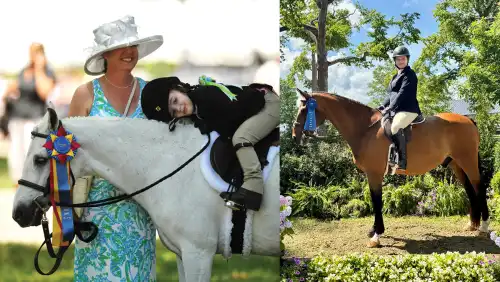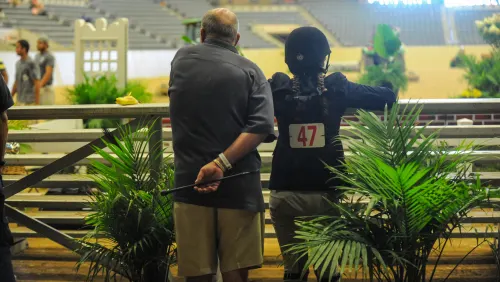Hunter/jumper competitors take note: The official start of the 2018 show season on Dec. 1 meant that a few rule changes kicked in. Visit the USHJA website for a full list of rule changes, but here are a few of the more interesting rule changes:
Around The Showgrounds
- All horses must be microchipped in order to receive points or be eligible for USEF and/or USHJA programs and awards. Horses may compete without microchips and in that case will not receive points or credit for competing. On Dec. 1 of 2018 no horse may compete without a microchip.
- No earbud(s) in while schooling. This rule was enacted for safety reasons, and applies to both hunters and jumpers in schooling areas at shows.
- Competition management must have and provide to the USEF an isolation protocol for horses in the event a horse with an infections disease enters the show grounds.
- A rule change increases the size of exercise areas at competitions based on the number of horses entered at a competition.
- USEF Horse of the Year awards are no longer required to be held at the USEF Annual Meeting. The federation now has the flexibility to hold the awards there or at another location or time if they so choose.
Hunter Happenings And Equitation Evolutions
ADVERTISEMENT
- Points and money earned in USHJA International Hunter Derbies may not count toward high performance conformation hunter or green conformation hunter national Horse of the Year standings. Conversations from the last USHJA Annual Meeting led to a consensus that as there’s no model component to the derbies, it’s not fair for horses to earn derby credit in the conformation standings. Credit earned in derbies may still be applied to other divisions’ national standings, such as 3’9” green hunter or amateur-owner.
- A C1 steward or certified schooling supervisor must supervise the schooling areas for hunter classes with $10,000 or more in prize money.
- A new rule defines how championships in equitation divisions may be calculated based on points, and also how equitation division championships may be awarded through a championship class.
Heads Up, Juniors and Amateurs
- There is now an amateur jumper division. This national division, which includes a USEF Horse of the Year award, does not require that riders own the horse they compete. Riders may compete at the following fence heights: 1.20/1.25-meter, 1.30/1.35-meter and 1.40/1.45-meter.
- Shows may offer a USHJA National Hunter derby restricted to juniors and amateurs. Shows may only do this if they also offer an open USHJA National Hunter Derby.
- If a show offers a 3’3″ junior hunter division, it must offer two sections. They may split the division according to horse size or according to rider age.
- Junior/amateur jumper classes that have both 15 or more junior entries and 15 or more amateur entries must be divided and prize money doubled. Before splits were based on the first class entries only. This rule doesn’t apply to special classes like combined classics or the highest prize money class of the section.
- Amateurs may organize clinics, but they may not instruct or train at the clinic.
- Adults may ride ponies in competition as long as the pony is not competing in a rated pony hunter section, a WIHS pony equitation class or a USEF pony medal class with a junior. Rated pony divisions include children’s pony hunter, green pony hunter, regular pony hunter. This rule does not apply to pony jumpers or at multi-discipline or multi-breed shows.
- USHJA Zone championships may offer a 3’3″ junior hunter section without offering a 3’6″ section. This was enacted as some zones found themselves short on 3’6″ competitors as fall indoor championships are often held during the same timeframe as zone championships.
Chronicle reporters will be on the scene in San Antonio, Texas, during the USHJA Annual meeting, Dec. 10-14 to keep you up-to-date with stories on coth.com on the conversations happening there.















